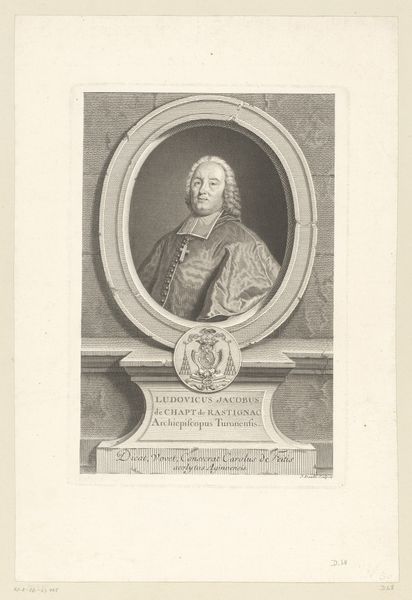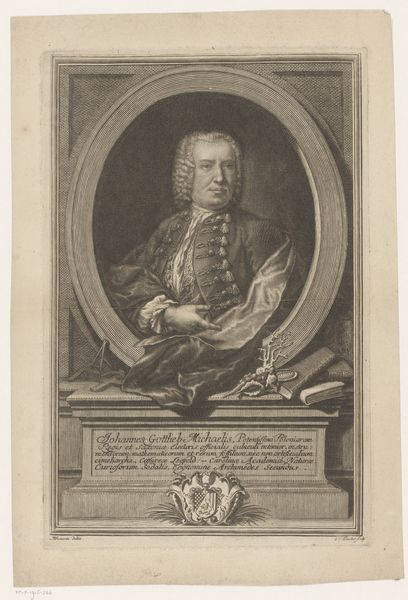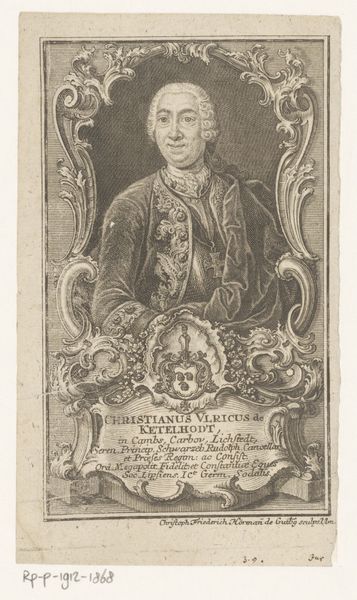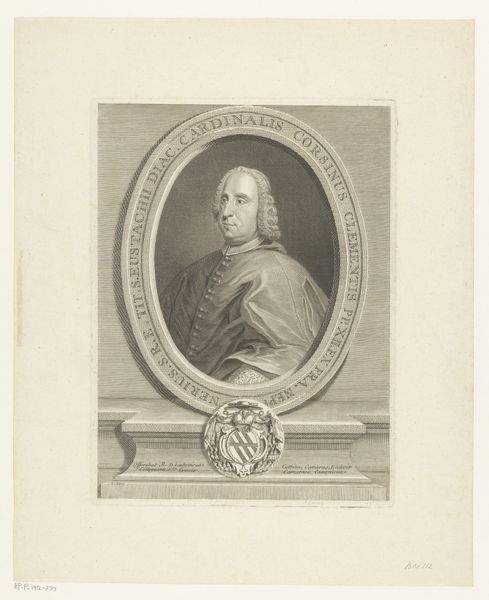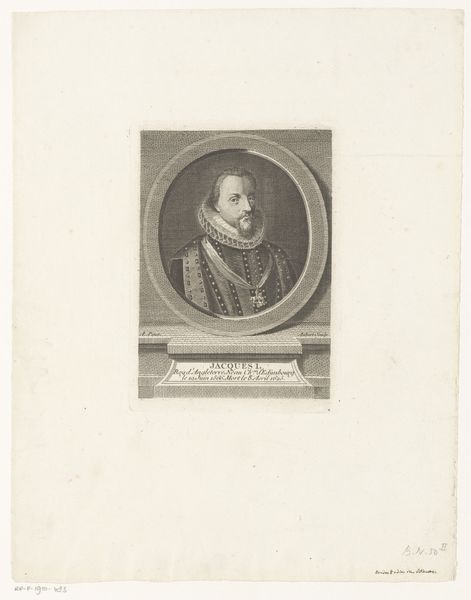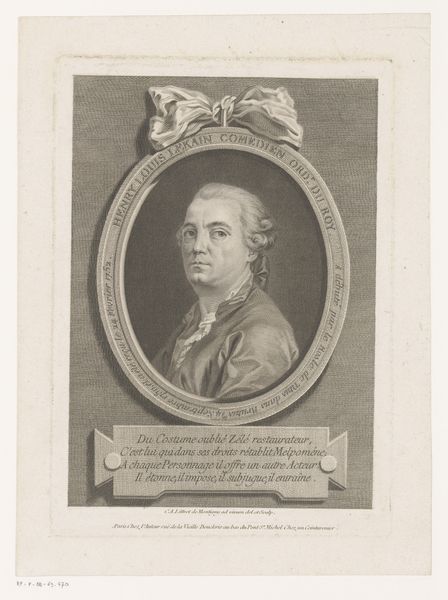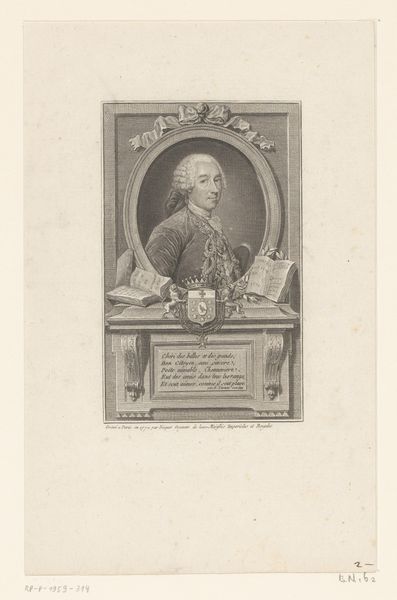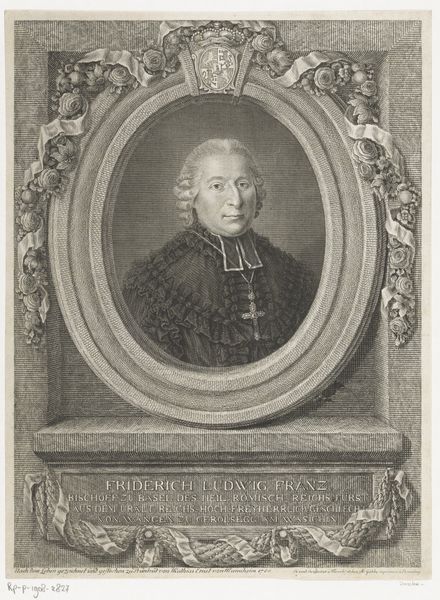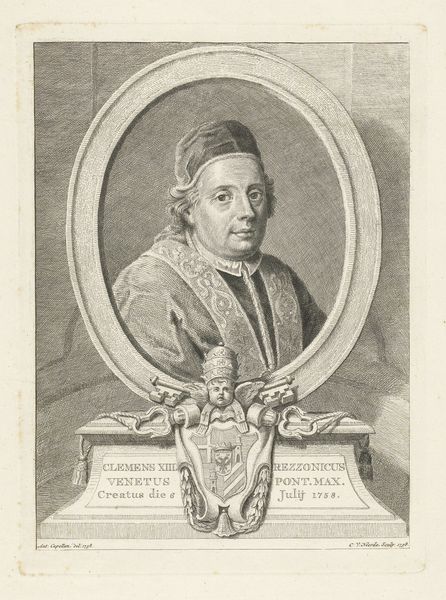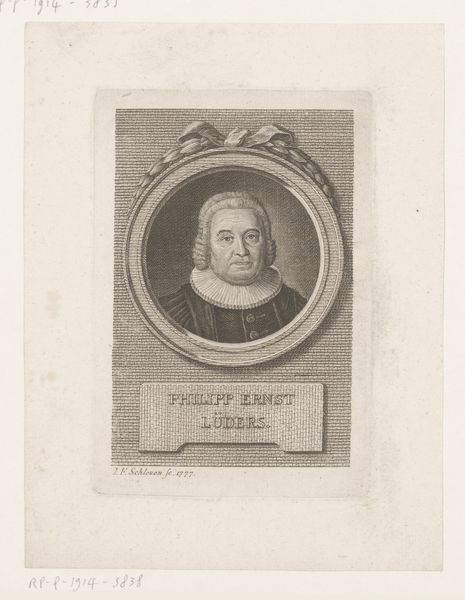
Dimensions: height 180 mm, width 108 mm
Copyright: Rijks Museum: Open Domain
Editor: Here we have "Portret van Lorenz Withof," an engraving by Aegid (II) Verhelst, dating from around 1755 to 1818. The precision of the lines is striking, and the way the artist has used them to create form and texture. The subject's face emerges so lifelike from the patterned engraving style. What do you see in this piece? Curator: I notice primarily the compositional arrangement. Observe how the circular portrait is framed by rectangular text. This interplay of geometric forms is very self-aware. The engraving's fine lines create a sophisticated texture, drawing attention to the very materiality of the work, how lines produce varying intensities, guiding the gaze. Editor: So you're focusing more on how the lines create this image, as opposed to the historical significance? Curator: Precisely. The subject is merely the departure point. Focus on the balance of light and shadow achieved through the strategic use of line density. Consider the semiotic weight of the garland above and the text panel beneath—they signify honour and erudition. But are these symbols essential, or does the engraving operate on a purely aesthetic level? Editor: That's interesting. I was initially drawn to it as a historical record. I hadn’t considered deconstructing it this way. Curator: Consider, then, how the artist has meticulously structured this work, guiding our eye, and how the very process of engraving shapes our interpretation independent of the subject. Disconnecting it from its historical meaning changes the emphasis and adds layers. What do you make of the font style? Editor: I see what you mean! The choice of font becomes part of the overall design, its formality echoing the sitter's pose. Thinking about all the design choices emphasizes what Verhelst was attempting in the execution. Thank you! Curator: Indeed. Now you perceive how an artwork's meaning arises from its construction as much as its context.
Comments
No comments
Be the first to comment and join the conversation on the ultimate creative platform.


